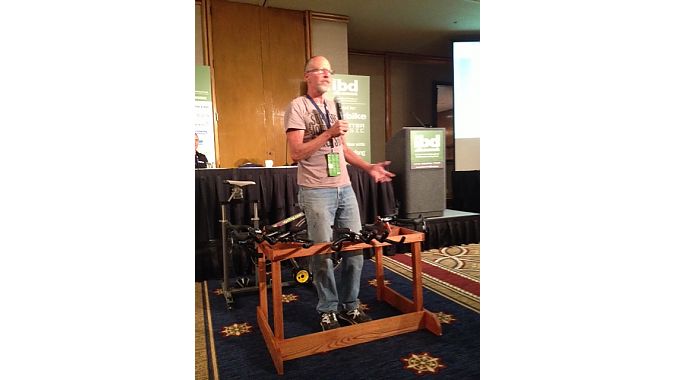MONTEREY, CA (BRAIN) — Retailers were awash in data Thursday as the second annual IBD Summit wound down with sessions on key performance metrics used by the National Bicycle Dealers Association’s Profitability Project and why the oft-neglected triathlon market is a valuable segment dealers shouldn’t ignore.
The NBDA Profitability Project, also known as P2, collects metrics from noncompeting dealers and shares the compiled data among the participants to indentify key performance indicators (KPIs) that drive profitability.
The P2 presentation was a cornerstone of 2012’s inaugural IBD Summit, and returned this year to dig deeper into the group’s data due to retailer demand, said Pat Hus, show director for Summit presenter Interbike.
On Thursday, Dan Mann of business consultancy the Mann Group moderated a high-profile panel of P2 retailers: Chris Kegel of Wheel & Sprocket in Wisconsin; Mike Hammanwright of Revolution Cycles in Washington, D.C.; Charlie McCorkell of New York City’s Bicycle Habitat; and Chris Holmes of Bicycle World of Houston.
The quartet zeroed in on three key profitability metrics to emerge from P2: gross profit per full-time employee; inventory turns by category (bike versus non-bike); and gross margin.
Average gross per employee should come in around $88,695, the panel shared. The number remains fairly consistent among different geographic markets, said McCorkell.
Kegel maintained this productivity measure is vital to ensuring retailers are able pay employees well enough to retain them in the long term. The danger, said McCorkell, lies in slashing headcount to get far above the per-FTE benchmark, jeopardizing quality of service.
Inventory turn was pegged at 2.63 turns for bikes, and 2.4 for non-bike product.
Before participating in P2, Hammanwright had been skeptical of many retailers’ high turn claims. “It showed me I needed to step up my game,” he said of the data. Further, the data reveals which retailers are hitting the best numbers, so he can draw from their best practices.
Gross margin, meanwhile, should come in around 38.2 percent for bikes, 48.3 percent for non-bike, the panel shared. “These numbers are major contributors to the cost of doing business,” said McCorkell, noting that the data informs retailers if they need to realize higher margins in lagging categories.
In addition to sharing data, the P2 dealers coalesce decades of retail expertise to improve practices among the group. “It’s allowed me to have a consulting group so I don’t have to operate in a vacuum,” said Hammanwright.
Give tri a chance
“Cheap.”
“Pain in the ass.”
“Buys online.”
Such was Summit attendees’ assessment of the typical tri customer.
The midmorning session “Why Are You Afraid of What Could Be Your Most Attractive Customer?” set out to debunk these stereotypes.
The recent surge in charity tri events has brought women flocking to the sport, joining a market of hard-core triathletes who don’t hesitate to shell out huge sums of cash to shave grams or gain an aero edge over the competition, panelists said.
So, who really is the typical tri customer? asked panelist Dave Alberga, executive chairman of Active Network. More than half earn $100,000 or more annually; the majority are highly educated; they spend an average of $2,500 a year; less than 20 percent of their purchases last year were made online; and almost 60 percent bought through specialty retailers, according to industry figures.
Writer and publisher Dan Empfield of Slowtwitch.com pointed out that a survey of his readers showed that although 85 percent had made an online purchase in the last year, more than 60 percent would prefer to buy at retail. This speaks to a vicious cycle in which retailers say they don’t want to stock tri products because those customers buy online, and triathletes are channeled to the Internet because retailers don’t have what they need, he noted.
“Triathletes are tactile people. They have a problem: It’s comfort. And Amazon can’t help with that,” Empfield said.
This opens up opportunities for bike fit revenue and bar, stem and saddle sales to help them achieve that desired comfort. “They love to spend $200 on a saddle,” Empfield said.
Additionally, Empfield’s research indicates that tri people tend to be bike people. Some 46 percent of his readers said they planned to buy a new bike this year, but only 16 percent said it would be a tri bike.
And while the women growing the entry level of the sport might not be plunking down several thousand for their first bike, many venture into triathlon as a social activity, bringing additional tri neophytes with them into the shop, said panelist Skip McDowell, president and owner of tri retailer Nytro Multisport in Encinitas, California.







